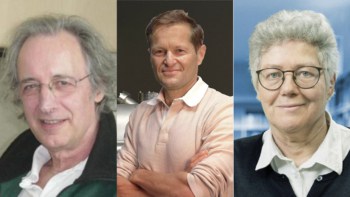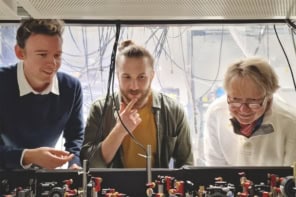High energy electrons have been trapped by a laser beam for the first time. Previously only atoms could be trapped by laser light. David Meyerhofer and Jan Chaloupka from Rochester University, New York, US have developed a unique 'ring' laser in which the intensity of the laser beam is less at the centre than at the edges. The intense electromagnetic fields generated by the laser thereby push the electrons to the weakest part of the beam - the centre - trapping them in the process (Phys Rev. Lett. 83 4538).
The experiment was carried out inside a vacuum chamber filled with a low density nitrogen or argon gas. A wave plate – in the form of a small circular piece of material – was inserted into the beam to reduce the strength of the signal at the centre of the beam. A series of lenses then focused the beam on a small spot in the middle of the vacuum chamber. Another set of lenses expanded the beam and sent the signal to a charged-couple device (CCD) camera. A second CCD camera, sitting on top of the chamber, looked for light scattered by the electrons trapped in the beam. Meyerhofer and Chaloupka were able to confirm that the electrons were trapped in the beam by comparing their experimental results with a earlier computer simulation.


